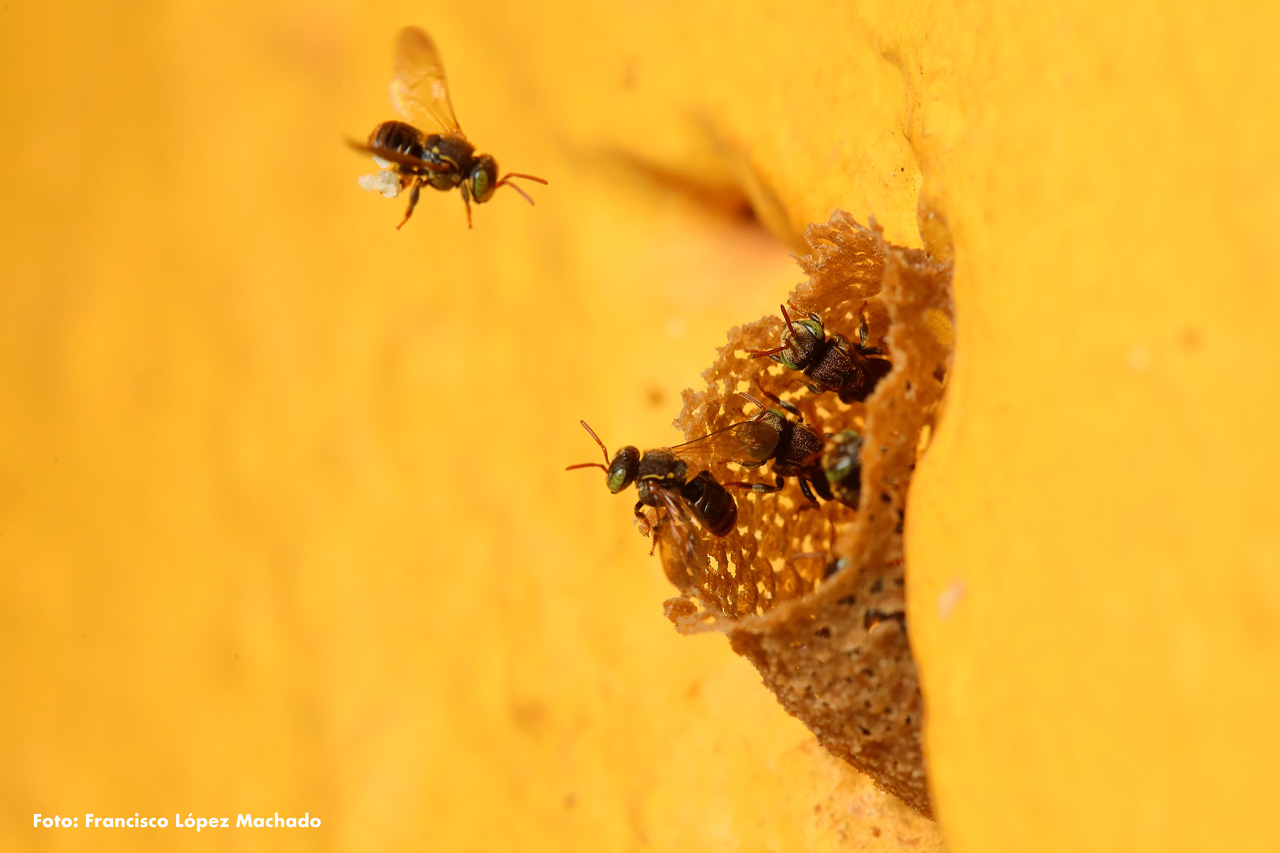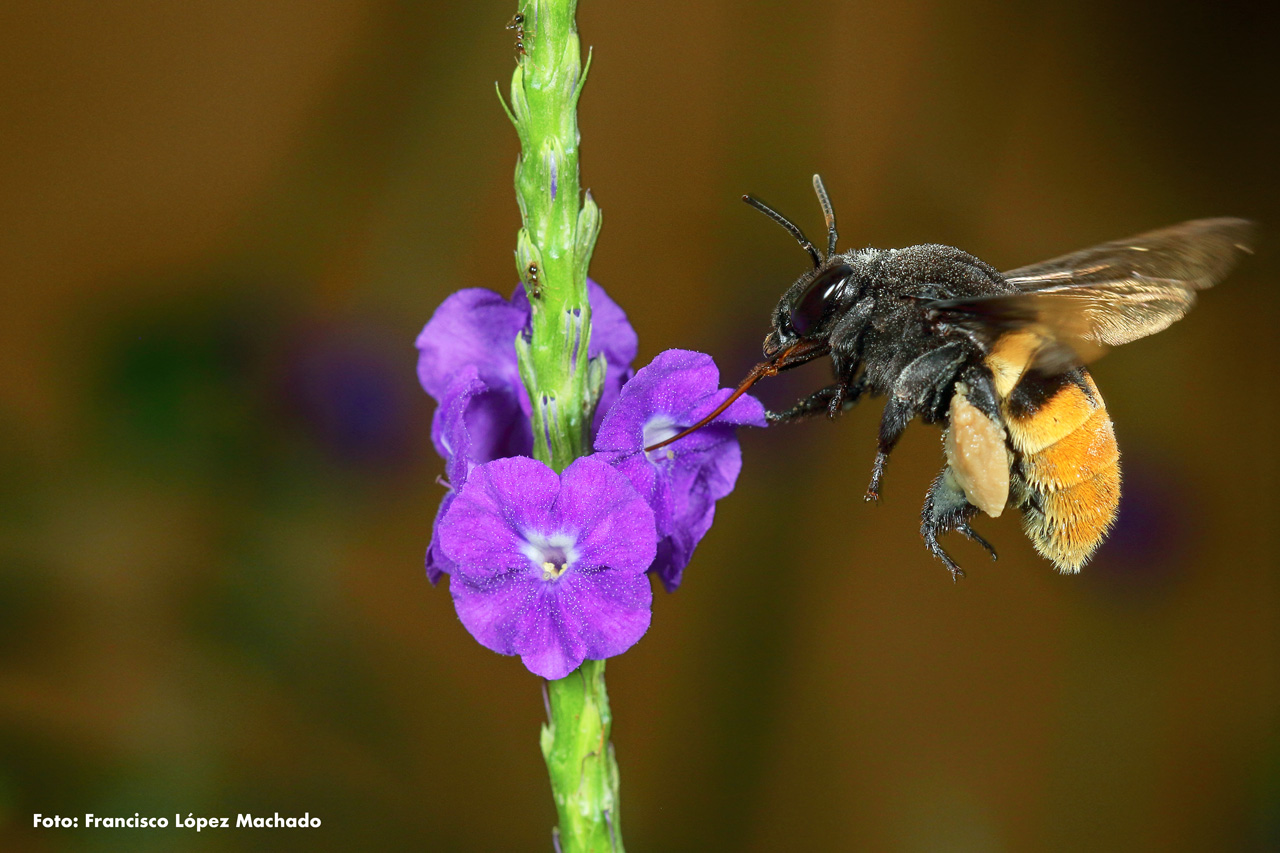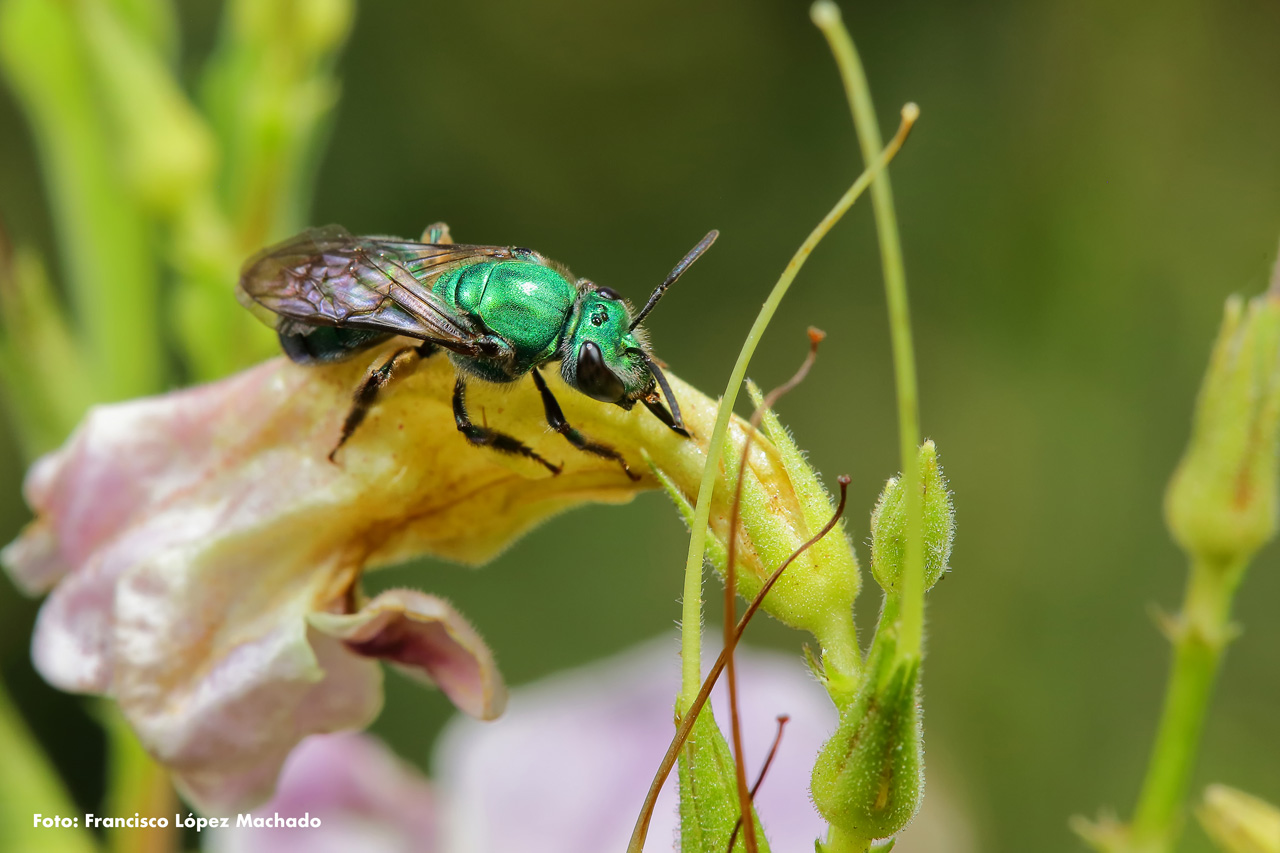 Centris flavifrons
Centris flavifrons
This is a solitary bee, meaning it builds its own nest and provides food for its offspring without the help of other bees. It nests in the ground, creating tunnel-like structures. The section where it lays the egg along with food—known as the brood cell—is lined with oils collected from flowers. For this reason, they are known as “oil-collecting bees.”
 Nannotrigona mellaria
Nannotrigona mellaria
This is a stingless bee species, meaning it does not sting. It is a social species, living in groups with cooperative care of the young, division of labor into castes, multiple overlapping generations within the same colony, and cooperative nest building. These bees usually build their nests in cavities found in living tree trunks, walls, or other structures, as shown in the photo. Nannotrigona mellaria is one of the species commonly used in meliponiculture for honey production.
 Exaerete smaragdina
Exaerete smaragdina
These are kleptoparasitic bees, meaning they lay their eggs in the nests of other species (for example, Eulaema spp.) so their larvae can feed on the food stored for the host larvae. They can often be seen visiting verbena (Stachytarpheta spp.) and parrot flower (Heliconia psittacorum) plants.
 Eulaema cingulata
Eulaema cingulata
This species ranges from Mexico to Brazil. It belongs to the group known as “orchid bees” because many species in this group have a close dependency on orchid flowers, although they visit and pollinate a wide variety of other plants. Males collect and store volatile chemical compounds from orchids and other plants in specialized structures on their hind legs, where they store and mix them over long periods. With these substances, they create “perfumes” that they display to attract females, likely serving as pheromone analogs.
 Pseudaugochlora graminea
Pseudaugochlora graminea
This species is widely distributed, from Argentina to Texas in the United States. It is a solitary bee that nests in the ground. It is commonly seen on flowers of the genus Solanum, such as tomatoes and potatoes, from which it collects pollen by vibrating its body, causing the flowers to release the pollen.
Traslated with AI support